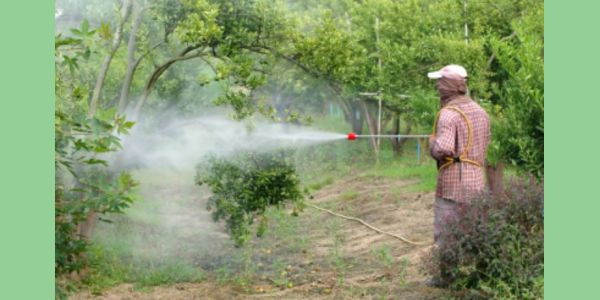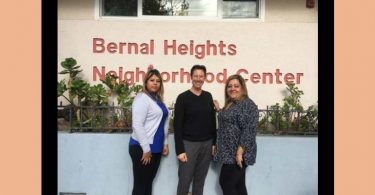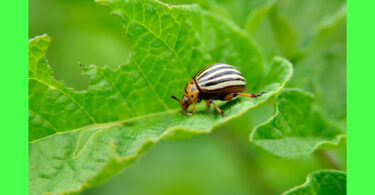Originally published in Wise Traditions in Food, Farming and the Healing Arts, Fall 2013. Reprinted courtesy Joette Calabrese: http://joettecalabrese.com/
Nineteen eighty-eight was an eventful year for me. I was pregnant for the second time. One day while gardening in front of our home in Buffalo, New York with my nearly three-year old son at my side, he suddenly looked up and pointed to an immense truck slowly creeping down our street with a colossal cannon affixed to the flat bed. The cannon was aiming a vile substance that smelled like a mix of dog dew and formaldehyde ripened in moldy carpet on a diagonal towards the trees on our street . . . and inadvertently directly into my neighbor’s and our bedroom windows.
Instinctively I plucked up my son, raced into the house, slammed down the bedroom windows, took a deep gulp of air, and called the Buffalo City Parks Department. I forced my composure into a syrupy, “What is being sprayed at the Elm trees on my street today?” “Oh, just some Sevin,” was the nonchalant response. Let me mention here that as soon as someone begins his reply to a direct question that demands a serious answer with a deflective “Oh, just. . .” my suspicions are aroused.
I immediately contacted the Department of Environmental Conservation, environmental protection organizations, city council members, and the manufacturer of the chemical Carbaryl, which is sold under the brand name Sevin. I collected information on safety studies and the material data safety sheet, and set for myself a plan of action.
What I discovered on the second page of that safety sheet alarmed me. Certain words jumped off the page that verified my initial fear and permanently established my distrust. I learned that animal experiments had shown reproductive problems in females from exposure to Carbaryl, including birth defects in beagle dogs and an increased rate of miscarriages in monkeys.
I spent the rest of the day on the phone scheduling meetings with city council members who might take an interest in such an issue. Several members were indeed concerned, and I was ready to meet with the first one the following morning. This meant that I wouldn’t have to go it alone in my plan to have the spraying halted, and the city council might take it from there. Well, sort of.
Buffalo City Hall is a grand Art Deco-style structure of thirty-two floors and I looked forward to gazing on the spectacular architecture while waiting to make my first appeal to a council member. It was 8 a.m. only a day after the tree spraying event and city hall employees were filing into the building. I was instructed to take a seat in the waiting room on the eighth floor. But while waiting I began to feel dizzy, breathless and jittery. By the time I entered the council member’s chambers I was certain I couldn’t sit through our scheduled meeting and I apologized that I was feeling uncharacteristically odd, almost as though I had inhaled poison. “Oh,” said the council member. “I should have mentioned that the entire floor is sprayed the second Friday of every month for ants and cockroaches, and they came in last night and doused this floor. Here, let’s open a window.” But it was too late. I was feeling too strange to speak with him. We arranged another date and I staggered home. The remainder of that day I could do nothing but endeavor to catch my breath in a state of steady anguish.
The next day, I miscarried. Was it coincidence? Or was it the two insecticide exposures within days that signaled my body to let go? If you have ever experienced the loss of a pregnancy you understand how uprooting this trauma can be. It took weeks for my emotions to settle, but when it was over, the experience had set my jaw. I became firm in my resolve to prevent my city from spraying lethal chemicals not only without warning, but under any and all circumstances.
Once I recovered, I spent a great part of most of my days meeting with the staffs of local hospitals, public schools, college campuses, churches, stores, and city government agencies to put a halt to pesticide applications inside and outside public buildings in Buffalo. I met with the local newspaper and TV stations and rallied friends and neighbors. Even my brother, a professional song and jingle writer, joined in. The catchy jingle he wrote, warning families against using pesticides, aired on the radio and was a convincing tool to warn local hospitals and businesses of the dangers of lawn chemicals.
My crusade was time-consuming yet exhilarating because finally, within a year, a mayoral committee was formed to address the problem. Entomologists from Cornell and Ohio University, local business leaders, and the city’s flagship hospital convened with myself, the mayor’s office and city council members in regular meetings. Buffalo made national news as the first U.S. city to take a stand against the use of pesticides, all initiated by one mother, who knew that the widespread use of pesticides was at best questionable, and at worst caused miscarriages.
During this time I was also studying homeopathy and I became keen on knowing how to address toxic responses via this medical paradigm. Homeopathic remedies are often originally derived from toxic substances and made into curative remedies via dilution. The idea that a toxic substance can foster a curative response is the very foundation of homeopathy. So couldn’t it then cure such responses to gross toxins such as pesticides?
Why certainly! In essence this means that the toxin acts as an antidote. Indeed the very symptoms that the poisoned victim experiences are the symptoms associated with the remedy. So if the warning signs include restlessness, anxiety, racing mind, and weakness, the remedy that would likely be useful would be Arsenicum album. As long as the symptoms match, the remedy will likely address or stimulate a person’s body to respond by eliminating the symptoms and resolving the illness. This does not mean that these symptoms are covered up, such as when one uses a drug like Tylenol to suppress pain. Instead the homeopathic remedy conveys a rallying of the body to eliminate the harm.
Throughout the years of working with students and clients who are chemically sensitive I have witnessed that not only are these remedies pertinent to the event at hand, but in some cases even for exposure that dates back months or even years. Additionally, it is useful to note that in many cases the symptoms are less significant in subsequent exposures when homeopathy is employed. Hence it is possible that the use of the correct homeopathic remedy may offer some immunity to these toxins in the future.
Here are three significant remedies to consider when your family (pets included) has been exposed to such chemicals:
- If there’s no actual immediate reaction to the pesticides, a well-known remedy of repute for providing generalized protection from poisonings is Natrum mur 6X. Take it every four to five hours for a few days after exposure.
- Arsenicum album 30C is the remedy of choice if the exposure has caused a response such as anxiety, diarrhea, breathlessness and weakness. Even if just one of these symptoms is apparent, this remedy could be a good match. Arsenicum album is made from a strong poison, arsenic, but like all homeopathic remedies it has been diluted to eliminate its toxic properties and render it a healing powerhouse.
- Carbolic acid 30C has a reputation for aiding those who experience a systemic reaction of a more serious nature. Years ago, a friend of a friend of mine, a chemical engineer, went into an anaphylactic reaction after exposure to formaldehyde. After a few doses of Carbolic acid 30, she showed signs of recuperation within minutes and fully recovered within hours.
I’m reminded that Margaret Mead once said, “Never doubt that a small group of thoughtful, committed citizens can change the world; indeed, it’s the only thing that ever has.” And Mark Twain, in an interview in Harper’s Bazaar in 1890, said, “The introduction of homeopathy forced the old school doctor to stir around and learn something of a rational nature about his business. You may honestly feel grateful that homeopathy survived the attempts of the allopaths to destroy it.” Unfortunately Mark Twain wasn’t around to witness this actual occurrence in the U.S. in the 1940s and even today. That’s why after completing my work on the pesticide ousting in Buffalo, I set my gaze on getting homeopathy to families.
In a perfect society, we would be able to prevent bellicose toxins from waging war on our families and knowing the precise homeopathic treatments designed to shield us. But life’s not like that. Well, except for now. This is just one of the countless reasons why I keep my remedy kit close at hand and my homeopathy knowledge current.
From: http://www.westonaprice.org/holistic-healthcare/taking-on-the-big-guns/




